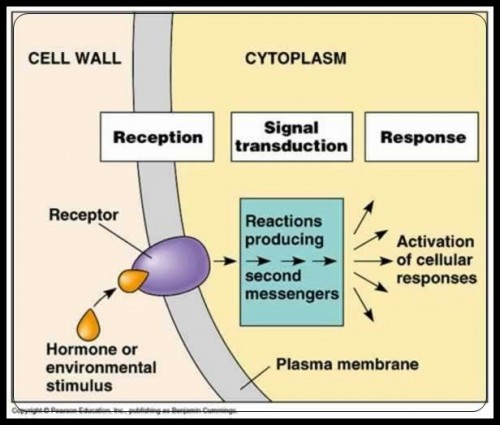In this chapter you need to become familiar with the following concepts:
- homeostasis (maintaining a stable internal environment in terms of temperature, hydration, pH, blood pressure and volume, oxygen and carbon dioxide concentration in the blood and the concentration of various ions, including sodium and glucose).
- stimulus-response and sensors-effectors
- positive and negative feedback mechanisms
- glands and hormones, including phermones
- signal transduction and signaling molecules
it is important to understand that lipid soluble hormones (lipophilic or hydrophobic) can pass through the cell membrane directly, but water-soluble hormones (hydrophilic or lipophobic) bind to a receptor molecule embedded in the cell membrane, which results in the activation of a secondary protein or messenger. This secondary messenger causes the cell to initiate a response. Signal transduction is a series of events (sometimes called a ‘cascade’) that changes the signal received by the cell.
- You Tube video – “Great Glands – Your Endocrine System” by CrashCourse Biology (11.20min)
- You Tube video – “The Endocrine System” by Bozeman Science (13.47min)
- You Tube video – Plant control by Bozeman Science (plant hormones) (7.53min)
- You Tube video – “Signal Transduction” – short animation (by congthanhng) (1.14min)
- You Tube video – “Signal Transduction” by The Penguin Prof. (9.40min)

